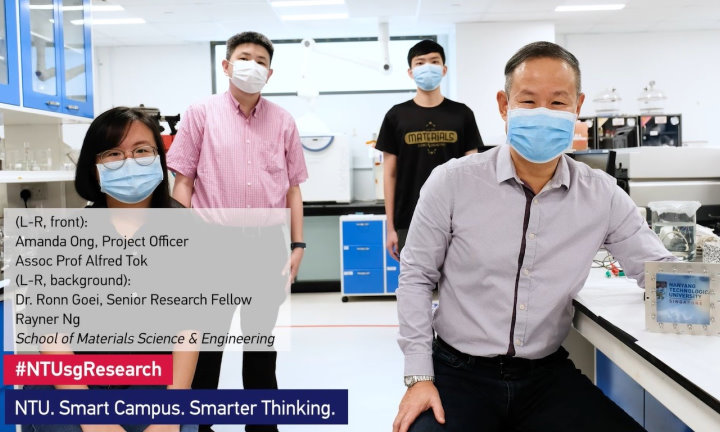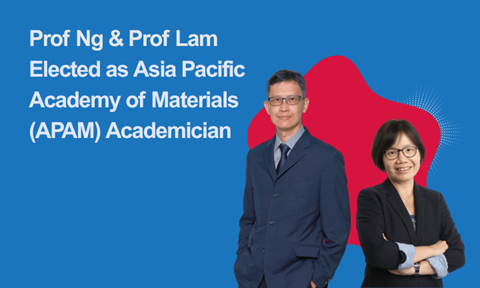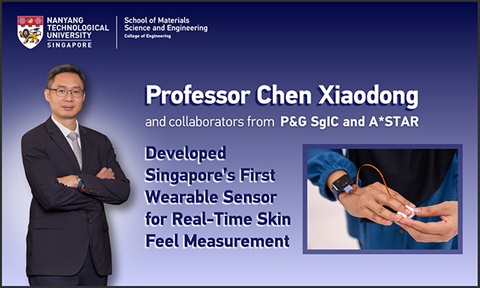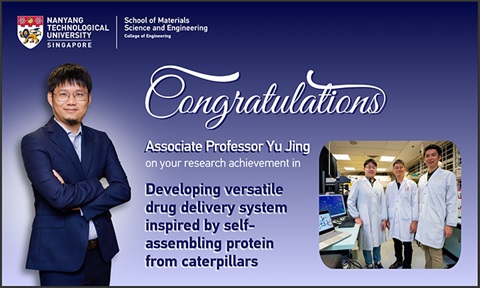'Smart' window blocks rays without blocking views – Associate Professor Alfred Tok
We are delighted to share the research achievement of Associate Professor Alfred Tok and team, which has been featured in various media.
Associate Professor Alfred Tok and team have invented a 'smart' window material that controls heat transmission without blocking views, which could help cut the energy required to cool and heat buildings. The new energy-saving material for electrochromic
(EC) windows that operates at the flick of a switch is designed to block infrared radiation - which is the major component of sunlight that emits heat.
The new material has a specifically designed nanostructure comprising advanced materials like titanium dioxide (TiO2), tungsten trioxide (WO3), neodymium-Niobium (Nd-Nb), and tin (IV) oxide (SnO2). The composite material
is intended to be coated onto glass window panels, and when activated by electricity, users would be able to ‘switch on and off’ the infrared radiation transmission through the window.
The invention could block up to 70 per cent of infrared radiation according to experimental simulations without compromising views through the window since it allows up to 90 per cent of visible light to pass through. The material is also about 30 per
cent more effective in regulating heat than commercially available electrochromic windows and is cheaper to make due to its durability.
The new electrochromic technology may help conserve energy that would be used for the heating and cooling of buildings and could contribute to the future design of sustainable green buildings, say the research team.
Lead author of the electrochromic window study, Associate Professor Alfred Tok said, "By incorporating the specially designed nanostructure, we enabled the material to react in a 'selective' manner, blocking near infrared radiation while still allowing
most of the visible light to pass through whenever our electrochromic window is switched on. The choice of advanced materials also helped improved the performance, stability and durability of the smart window."

From left to right: Amanda Ong, Dr Ronn Goei, Rayner Ng and Assoc Prof Alfred Tok. Source: NTUsg Youtube
The breakthrough research was published in the peer-reviewed scientific journal ACS Omega, with the title “Nd-Nb co-doped SnO2/α-WO3 Electrochromic Materials: Enhanced Stability and Switching Properties”. The research
article can be found via this link: https://pubs.acs.org/doi/10.1021/acsomega.1c03260.
Our heartiest congratulations to Prof Tok and team on the excellent achievement!
Media Coverage:






.tmb-listing.jpg?Culture=en&sfvrsn=3f725dd6_1)
